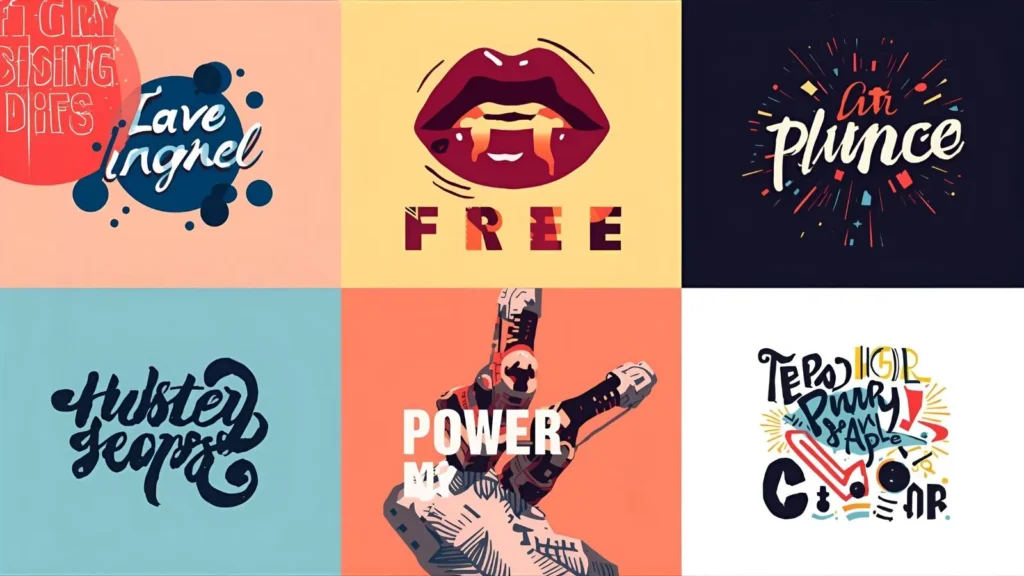Graphic design is everywhere—on the websites we visit, the packaging we open, the ads we scroll past, and even the apps we use daily. It’s the visual language that communicates ideas, builds brands, and inspires people. Whether it’s a minimalist logo, a bold social media campaign, or an engaging magazine layout, graphic design blends art and strategy to deliver a message.
But what exactly is graphic design? Many people think it’s only about making things look pretty. In reality, graphic design is about problem-solving through visuals. A well-designed poster not only catches the eye but also conveys key information clearly. A strong brand identity can help a business stand out in a crowded marketplace.
In this complete guide, we’ll explore the history, principles, types, tools, and career opportunities in graphic design. By the end, you’ll understand how graphic design works, why it’s important, and how you can build a career in this exciting field.
📜 What Is Graphic Design?
Graphic design is the practice of creating visual content to communicate messages. It combines typography, imagery, colors, and layout to engage an audience and solve communication challenges.
At its core, graphic design isn’t just about making art. It’s about functionality. A designer asks:
- What is the message?
- Who is the audience?
- How can visuals make this message clear and appealing?
In short, graphic design is the art of communication through visuals.
🕰️ A Brief History of Graphic Design
Understanding today’s design trends means looking back at history.
- Prehistoric Communication – Cave paintings and symbols were the earliest forms of visual storytelling.
- The Printing Revolution (1440) – Johannes Gutenberg’s printing press transformed communication, making books and posters more accessible.
- Industrial Age (1800s) – With mass production came advertising, packaging, and the need for commercial design.
- The Bauhaus Movement (1919–1933) – A German design school that emphasized simplicity, geometry, and functionality.
- Digital Era (1980s–Today) – Computers and design software revolutionized the industry, making design more accessible and versatile.
Today, graphic design is everywhere—branding, UI/UX, digital marketing, packaging, and beyond.
🎨 The Principles of Graphic Design
Every great design follows certain principles that guide how visuals work together.
1. Balance
Visual weight should feel even. It can be symmetrical, asymmetrical, or radial.
2. Contrast
Opposites like dark vs. light or large vs. small make designs eye-catching.
3. Alignment
Proper alignment creates order and professionalism.
4. Proximity
Related elements should be grouped together for clarity.
5. Repetition
Consistency in fonts, colors, and elements builds unity.
6. White Space (Negative Space)
Empty space is powerful—it makes content more readable and elegant.
7. Hierarchy
Important information should stand out using size, color, or placement.
Together, these principles help designers create visuals that are both beautiful and effective.
🖼️ Types of Graphic Design
Graphic design is a broad field with many specializations. Here are the main types:
1. Brand Identity Design
Logos, color palettes, typography, and brand guidelines that define a company’s image.
2. Marketing & Advertising Design
Posters, social media graphics, brochures, and billboards that promote products or services.
3. Web & User Interface (UI) Design
Designing websites, apps, and interactive media with a focus on user experience.
4. Packaging Design
Labels, boxes, and product packaging that attract buyers on shelves.
5. Print & Publication Design
Magazines, books, and newspapers with engaging layouts and visuals.
6. Motion Graphics Design
Animated videos, explainer clips, and digital ads with movement.
7. Environmental Design
Signs, murals, and exhibition graphics that transform physical spaces.
Each type requires a mix of creativity, technical skills, and understanding of the target audience.
💻 Essential Tools for Graphic Designers
Modern designers rely on powerful tools to bring ideas to life.
- Adobe Creative Cloud – Industry standard (Photoshop, Illustrator, InDesign, After Effects).
- Canva – Beginner-friendly drag-and-drop tool.
- Figma & Sketch – Popular for UI/UX design.
- CorelDRAW – Used for vector illustrations.
- Procreate – Digital illustration on iPads.
- Affinity Designer – Affordable alternative to Adobe.
Besides software, designers need a good computer, drawing tablet, and color-calibrated monitor to produce professional results.
🧠 The Role of Creativity in Graphic Design
Graphic design is not only technical—it’s also deeply creative.
Designers often:
- Brainstorm concepts from client briefs.
- Sketch rough ideas.
- Experiment with colors, layouts, and typography.
- Refine until the design communicates clearly.
Creativity is about solving problems in fresh ways, not just decoration. For example, a nonprofit poster should both catch attention and motivate action.
🌍 Why Graphic Design Matters
Graphic design is essential in today’s world because:
- First Impressions Matter – A well-designed logo can make a company look professional.
- Communication is Clearer – Infographics explain complex ideas simply.
- Emotional Connection – Colors and visuals build trust and emotion.
- Business Growth – Strong branding leads to stronger sales.
Without design, businesses would struggle to stand out in a crowded marketplace.
📚 Learning Graphic Design: Skills You Need
To become a successful graphic designer, you’ll need both technical and soft skills.
Technical Skills:
- Mastering design software.
- Understanding typography and color theory.
- Knowing file formats (JPEG, PNG, SVG, PDF, etc.).
- Understanding print vs. digital design.
Soft Skills:
- Creativity and imagination.
- Communication with clients.
- Time management for deadlines.
- Problem-solving mindset.
Graphic design is a lifelong learning journey, and practice is the best teacher.
🚀 Careers in Graphic Design
Graphic design offers a wide range of career paths. Some popular roles include:
- Graphic Designer – Creates visuals for different industries.
- Brand Identity Designer – Builds logos and style guides.
- UI/UX Designer – Specializes in digital product experiences.
- Art Director – Oversees design projects and creative teams.
- Motion Graphics Designer – Focuses on video animations.
- Freelance Designer – Works independently with clients.
The field is flexible—designers can work in-house, for agencies, or as freelancers.
💼 Salary and Job Outlook for Graphic Designers
Graphic design is a growing field. According to job reports:
- The average salary for graphic designers in the U.S. is around $55,000 per year.
- UI/UX designers and art directors earn higher, often above $80,000 per year.
- Demand is strongest for digital design skills like web and motion graphics.
Freelancers can earn more depending on skill and reputation.
📈 Trends in Modern Graphic Design
Design evolves with culture and technology. Here are today’s top trends:
- Minimalism – Clean, simple, and bold.
- 3D Design & Motion – Adds depth and interactivity.
- Bold Typography – Eye-catching fonts that dominate layouts.
- Sustainability Design – Eco-friendly packaging and visuals.
- Neon & Retro Colors – Nostalgia mixed with modern vibes.
- AI-Generated Design – Artificial intelligence tools for creativity.
Trends change, but the foundation of design—clarity and communication—remains constant.
🛠️ How to Start a Career in Graphic Design
If you’re inspired to begin, here’s a step-by-step roadmap:
- Learn the Basics – Start with online tutorials, courses, or design school.
- Practice Daily – Redesign logos, posters, or social media graphics.
- Build a Portfolio – Collect your best projects to show clients.
- Use Free Tools First – Start with Canva or free alternatives.
- Network with Designers – Join online communities and design forums.
- Take Freelance Jobs – Platforms like Upwork and Fiverr help beginners gain experience.
- Keep Learning – Design is always evolving, so stay updated.
With dedication, anyone can enter the world of graphic design.
✅ Conclusion
Graphic design is more than just visuals—it’s a powerful form of communication. From logos to websites, posters to packaging, design connects businesses with people and ideas with action.
We’ve covered its history, principles, types, tools, skills, careers, and trends. Whether you’re a beginner or aspiring professional, graphic design offers endless opportunities for creativity and impact.
If you’re looking for a career that blends art, technology, and problem-solving, graphic design could be your perfect path. The future of design is bright, and the world will always need great visuals to tell great stories.


